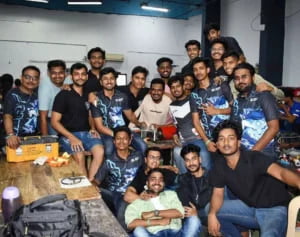Introduction
History of Combat Robotics
Combat robotics traces its roots back to the early days of hobbyist robot builders and do-it-yourself competitions. With the advent of events like BattleBots and Robot Wars in the late 1990s, combat robotics exploded into the mainstream, captivating audiences with intense battles between remote-controlled machines. Over the years, combat robotics has evolved, with advancements in technology pushing the boundaries of design and engineering. Today, combat robots come in all shapes and sizes, from agile spinners to sturdy wedges, each equipped with unique weapons and strategies to dominate the arena.
Why Combat Robotics Matters for Students, Makers and Innovators
Why Combat Robotics Matters for Students, Makers and Innovators
Combat robotics isn’t just about metal mayhem; it’s also a valuable educational tool for students and makers alike. By participating in combat robotics, students gain hands-on experience in engineering, design, electronics, and programming, all while having a blast in the process. Combat robotics fosters creativity, critical thinking, and teamwork, skills that are essential for success in the 21st-century workforce. For makers, combat robotics provides a platform to unleash their creativity and showcase their ingenuity, pushing the boundaries of what’s possible in the world of robotics.
Weight Classes in India
Weight Classes in India
In India, combat robotics competitions feature a range of weight classes, catering to robots of various sizes and capabilities. These weight classes include:
- Beetleweight: Up to 1.5 kilograms
- Dodgeweight: Up to 8 kilograms
- Featherweight: Up to 15 kilograms
- Lightweight: Up to 30 kilograms
- Middleweight: Up to 60 kilograms
- Heavyweight: Up to 110 kilograms
Comparing the weight class distribution in India with other countries reveals interesting insights into the global landscape of combat robotics. While the distribution may vary slightly from country to country, the core principles remain the same: to provide a diverse range of weight classes that accommodate robots of all shapes and sizes, ensuring fair and exciting competition for participants and spectators alike.
As we conclude our exploration of combat robotics, it’s clear that this electrifying sport holds immense value for students, makers, and enthusiasts around the world. From its humble beginnings to its present-day prominence, combat robotics continues to inspire innovation, foster creativity, and push the boundaries of what’s possible in the world of robotics. Whether you’re a student looking to gain hands-on experience, a maker eager to showcase your skills, or simply a fan captivated by the spectacle of metal mayhem, combat robotics offers something for everyone. So, strap in, power up your bots, and get ready for the ultimate showdown in the arena of combat robotics!
Why Combat Robotics Matters for Students, Makers and Innovators
Why Combat Robotics Matters for Students, Makers and Innovators
Combat robotics isn’t just about metal mayhem; it’s also a valuable educational tool for students and makers alike. By participating in combat robotics, students gain hands-on experience in engineering, design, electronics, and programming, all while having a blast in the process. Combat robotics fosters creativity, critical thinking, and teamwork, skills that are essential for success in the 21st-century workforce. For makers, combat robotics provides a platform to unleash their creativity and showcase their ingenuity, pushing the boundaries of what’s possible in the world of robotics.



